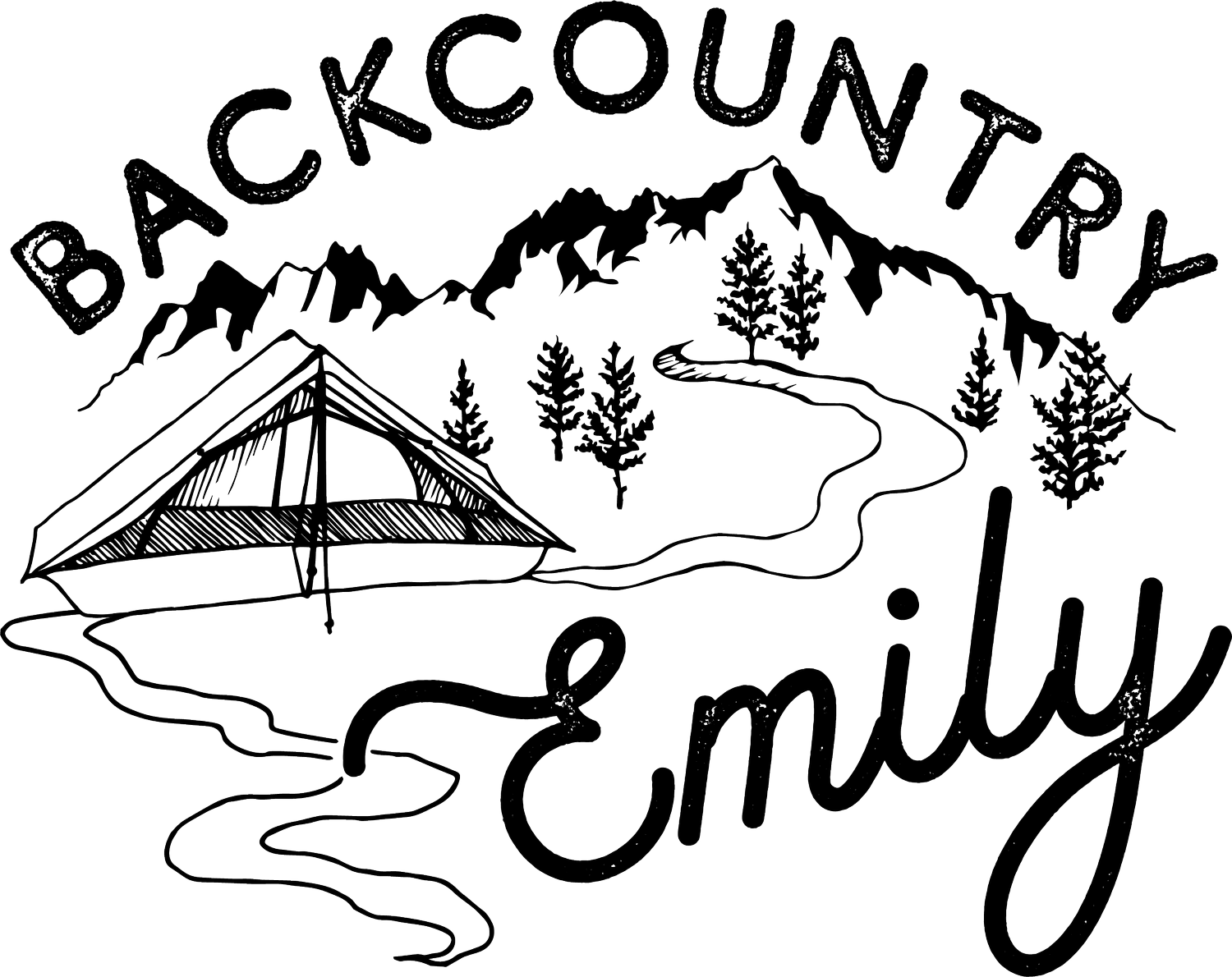Zpacks Duplex Tent
My PCT thru-hike tent. Super light, super roomy, and a second home. Will always recommend this as an amazing, ultralight tent.
Name: Zpacks Duplex
Specs:
Best Use: Backpacking
Seasons: 3-season (though many use in snow as well)
Size: 2 person
Doors: 2
Weight: 21 oz
Poles: None
Tent material: 0.51 oz/sqyd Dyneema Composite Fabric (DCF, aka Cuben Fiber)
Set-up: Non-freestanding, 2 Trekking Poles. Option to add “flex poles” to make it freestanding.
MSRP: $599
What I Like:
Frosty mornings with the Duplex
Weight: Holy cow, this thing is so light! With the 8 stakes I have to set it up, the tent comes in right at 1.5 lbs. A 2 person tent, with 2 doors, at 1.5 lbs! So light! As you can imagine, this was the main selling point for me to get this tent. I needed to get my base weight down for my PCT thru-hike, and everything I read about this tent was amazing, so I decided to go for it. I don’t know how much more I can say, but wow is it light.
Don’t Need a Groundsheet/ Footprint: This isn’t so important to some people, maybe, but I love not having to worry about putting something underneath the tent to protect the bottom. I set up in some pretty exposed, rocky areas and never had any issues with the tent. The bathtub floor is thicker than the fly, and can handle rougher terrain. Of course, I tried to find places that were softer: dirt, sand, etc. But sometimes there would be those few little sticks or rocks that poked up. Never had a puncture.
Ready-To-Go: What I mean by this is that all of the guy lines are already attached. This is common in most tents that you’d buy from a big retailer or company like Nemo or Big Agnes, but in the ultralight world, many companies require you to buy the material, and attach guy lines and line locs on your own. So getting a super light tent with all of the items needed to pitch it (except stakes and poles) is pretty great, especially if you aren’t into making your own gear or tying knots, etc.
Ease of set-up: So this wasn’t originally a thing I liked. I had a difficult time getting the pitch and set-up right at first, but over time it became sooo easy, and I even liked it better than a tent with poles, which I discovered after setting up a tent with poles after using the Duplex for my whole thru. For starters, being able to adjust the guy lines a lot was awesome. I could extend the line or pull it in based on the area I was pitching the tent in. If there was a rock in the ground or something in the way, I could move the line left/right/front/back and easily adjust the tent around that obstruction without compromising the integrity of the tent shape. With the pre-adjusted guy lines of a freestanding tent, you really don’t have that much flexibility with pitching, and either need to forego the stakes, or completely move the tent.
Space: This tent is literally like a palace for one person. Two people would be totally doable, keeping gear outside of the tent. At the beginning of my thru, I was taking up the whole inside of the tent with my “gear explosions” every night, trying to find things. By the end of the trail, I had less stuff, and everything that I was using had a place in the tent, and I felt like I was taking up such a small space and had so much left over room. I loved being able to stretch out and have all this room for my stuff, but I know now that I could probably go with a smaller tent for just me. But this is definitely spacious enough for two people on ultralight adventures, unlike my Big Agnes Fly Creek which I wouldn’t want to share under any circumstances, really.
“All-in-One”: I thought it was so great, especially at the end of a long hiking day, that I didn’t need to set up the body, and then the fly of the tent. It’s just all encompassing, since it’s a single wall tent, so I didn’t have 2 parts to set up and stake out. This is just so nice because I’m pretty lazy. The only downside to a single-wall tent in my opinion, is not being able to see the stars at night. But I think I only woke up in the middle of the night on my thru-hike one or two times since I was so tired every day.
Two Doors, Two Vestibules: Even though it was just me, I loved having this extra space, and having side-entry doors. Sometimes I’d get into the tent one door, and go out the other because I had to pitch on a slant, and while this seems ridiculous, sometimes at the end of the day, and beginning of the day, you’re so tired and sore that you need to let gravity help you out a bit, and sort of just roll into and out of your tent, and not try to fight gravity by crawling out the uphill side. Am I making sense? I just like having 2 doors. I’d be able to do something with one door, but it needs to be side-entry.
Rainbow Doors: I really like the way the door is and the zipper. It’s nice to fully unzip the mesh and then its not in your face while your getting your shoes on in the morning and you don’t need to tie it back or anything. It just nicely sits on the ground inside your tent. Perfect.
Inherently Waterproof: DCF is waterproof without any treatment, which is very nice for a variety of reasons. First, I spilled in my tent a decent amount. Usually just water when filtering, but, since DCF is waterproof, the fabric didn’t soak it up and leave a wet spot for the rest of the night! I just grabbed my bandana and sopped up the spill and it was great. Second, rain! It didn’t rain often, but when it did, having the tent be DCF was great. First thing in the morning, I could just shake it a bit and most of the water would just come off right there. Once I got some sun and could dry it out, it seemed to completely dry much faster than others who had silnylon tents. Also, if the ground was wet, the wetness didn’t soak through to the tent floor, it all stayed outside! Yay!
Good in wind: I had a decent amount of windy nights on the PCT. What I liked about this tent was that it was solid in the wind. I think with how you pitch it and it connects to the earth, and because the trekking poles are just more solid than tent poles, and make a more solid connection with the ground, the tent is just really secure when it’s windy. It’s a little noisy in the wind though, especially if you have a door flapping in the wind. But as long as you have a pretty taut pitch and your stakes are secured, you’re golden. You also don’t have to worry about tent poles bending or snapping. Score!
Versatility: The tent honestly doesn’t seem that versatile until you use it a lot. But I love being able to adjust how I’m staking the tent, and how I’ve adjusted my trekking poles in ways that I can almost get the fly completely on the ground, or raise the poles a little bit to make a little more headroom, or adjust it a little so I can make the bathtub floor higher on windier or rainy nights, or have it be lower on fair nights. I didn’t really figure out how to do all of these things intentionally until Northern California on my hike, but its possible and is very helpful for certain weather conditions.
So much room for me and all my gear
What I Don’t Like
Price: It’s expensive. But if you’re doing something like a thru-hike, I think it’s worth the cost. Especially once you realize you’ll be sleeping in it almost every night for 5-6 months.
Durability/ Fragileness: DCF is actually pretty strong. BUT, I still got small pin-hole holes in the fly of my tent that I had to repair in field with cuben tape. I don’t know of anyone with a silnylon tent who had issues like this, so I think its more of a DCF thing than a Duplex thing. I also got little rips near the side guyline reinforcements, I think from trying to pitch the tent waaayy too taut. And some other tiny holes on the fly, maybe from the way I stored the tent each day, with the guy lines and small metal hooks rubbing against the material? I’ll never know, but Zpacks didn’t think this was weird.
Warranty: Zpacks protects the tent against material workmanship for two years, and says the life of the tent is ~1 thru-hike of 2500 miles. So basically, if anything happens to the tent after your thru-hike, they’ll probably shrug their metaphorical shoulders and say, “well, it lasted it’s lifespan!”. Unless you are a famous YouTuber or blogger, or whatever, they probably won’t do anything to replace it. This is unlike some other companies like Big Agnes or Gossamer Gear, who are notorious for really standing by their gear and replacing items that fail, or free or a small fee.
Footprint: This is really only in the context of a thru-hike and needing to share camp areas with others, but this tent can take up a lot of room, which can be difficult when trying to share campsites with others, especially if you are aiming for a popular spot and there may already be other hikers there. You can pull the guy lines in a bit, but the overall area it takes up is a bit larger than the bathtub floor itself. This was only an issue a few nights on the PCT.
Condensation: This is something you kind of have to deal with when you’re using a single-walled tent. If I closed all of the vestibule doors, I definitely had condensation on the fly. The good thing is that the construction of the tent is such that it will roll down the sloped side of the tent and drip out of the mesh in-between the bathtub floor and fly. I never had condensation drip onto me. But I definitely had many nights with condensation.
Noisy: DCF is kind of crinkly, and if it’s windy, its a little noisy. Usually only if the tent was not pitched taut, though, or you didn’t tie back the vestibule doors.
The footprint may be a little big, but it can squeeze into some small spots!
I feel like I’m forgetting about some of the things I love about the Duplex, but overall, its an amazing tent, and I will recommend it a billion times over to anyone who is thinking about getting it. Especially if you’re transitioning from a “traditional” backpacking tent, and thinking about thru-hiking and dropping pounds off of your base weight.








